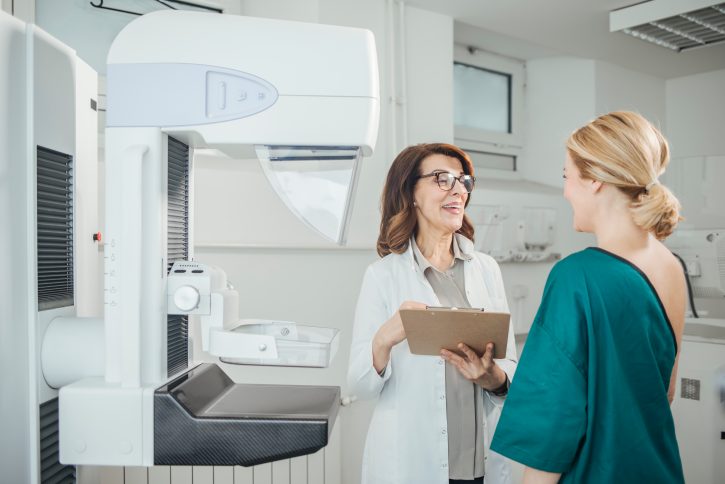
Post originally published July, 2021.
Mammograms are the best tool for catching breast cancer in its early stages when it is most treatable. Finding breast cancer early can lead to more successful treatments and better outcomes.
The American Cancer Society recommends optional yearly mammograms for women between age 40 and 44, annual mammograms for women age 45 to 54, and either every other year or annual mammograms for women 55 and older. If you are high risk for developing breast cancer, your guidelines for screening may differ – talk to your healthcare provider about what is right for you.
Preparing for Your Mammogram
Whether you are preparing for your first mammogram or your fifteenth, here are a few tips to keep in mind.
![]()
Try to use the same facility for your mammograms. Sticking with one location makes it easier for the provider to compare your results from year to year. If you do go to a different facility, take records of your previous locations and dates of mammograms, biopsies or other breast treatments, and try to have images of your previous scans sent to the new facility.
![]()
Plan ahead. About a week after your menstrual period is the best time to schedule your mammogram, in order to minimize discomfort during the X-ray. If possible, try to avoid the week before your menstrual period when your breasts may be swollen or tender.
![]()
Think about what to wear. Wearing a two-piece outfit that includes a skirt or pants, will be easiest when it comes time to remove your top and bra for the mammogram. Avoid wearing deodorant, anti-perspirant, powder or lotion on or around your chest, as these substances can impact your results.
![]()
Communicate. If you have noticed any changes in your breasts or have any concerns, discuss those with your technologist prior to your mammogram. You will also want to share if you have a personal or family history of breast cancer, and if you might be pregnant or are breastfeeding.
What to Expect During a Mammogram
The process of getting a mammogram usually lasts about 20 minutes. You will undress from the waist up and be given a gown or robe to wear. During your mammogram, the technologist will position your breasts on the machine’s plates and will change your position between pictures.
In order to get a clear view in the images, your breast must be flattened between two plastic plates. The machine’s upper plate will lower to compress your breast – however this compression only lasts a few seconds for each picture.
Generally the compression is uncomfortable, and it can be painful. If something hurts, tell the technologist.
Getting Your Results
You can expect to get the results of your mammogram within 10 days. If you have not received results or been contacted by your healthcare provider, call the facility where your mammogram was done. If your results appear abnormal, you may need to receive a diagnostic mammogram for additional pictures, or get other tests, such as an ultrasound or biopsy. Often, a suspicious result is not evidence of breast cancer, but of dense breast tissue or a cyst.
If you are due for a mammogram, don’t wait. Call 740-687-8666 to schedule your screening today.
Source: American Cancer Society